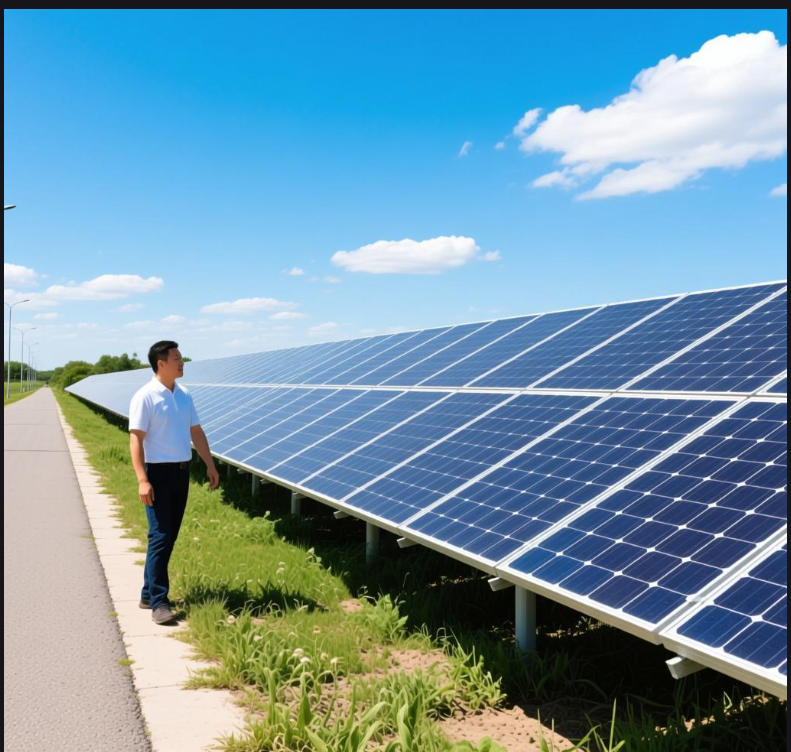Views: 53 Author: Site Editor Publish Time: 2025-10-13 Origin: Site









Under the dual pressures of the energy crisis and global warming, the photovoltaic industry is reshaping the global energy landscape at an unprecedented pace. As one of the most promising renewable energy sources, photovoltaic technology directly converts sunlight into electricity, providing humanity with a clean and sustainable energy transition path. From silicon wafers in laboratories to power generation grids covering deserts, the photovoltaic industry has leapt from a marginal energy source to a core pillar of the carbon neutrality strategy. As the global energy structure undergoes profound adjustments, the photovoltaic industry not only carries the mission of replacing fossil fuels but also becomes a key engine driving the green economy and creating new jobs. This article will systematically analyze the technological breakthroughs, market evolution, and future challenges of the photovoltaic industry chain, presenting readers with a three-dimensional picture of this emerging industry. The thriving photovoltaic industry chain is driven by the coordinated efforts of three pillars: upstream material innovation, midstream manufacturing upgrades, and downstream application expansion.

In the upstream sector, breakthroughs in polysilicon purification technology have achieved a purity of 99.9999%. Diamond wire sawing has achieved a breakthrough in monocrystalline silicon wafer thickness of 180μm. PERC cell technology, which reduces silver paste consumption by 30%, has become the industry standard. In the midstream manufacturing sector, the power of 210mm large-wafer modules has exceeded 600W. Improved PID resistance in double-glass modules has extended the warranty period to 30 years. The introduction of AI-powered quality inspection in smart factories has boosted the yield rate to 98.5%. Downstream applications are experiencing a surge in diversification. Fishery-solar hybrid projects are generating both power generation and aquaculture benefits. BIPV photovoltaic curtain wall installations have increased by 40% annually. Breakthroughs in photovoltaic hydrogen production have reduced the cost of green hydrogen to 18 yuan/kg. This technological convergence across the entire industry chain has driven an 89% reduction in the cost of photovoltaic electricity per kilowatt-hour over the past decade, injecting strong momentum into the global energy transition. While the photovoltaic industry is rapidly expanding, it also faces multiple structural challenges. On a technical level, the stability of perovskite cells remains a challenge, making laboratory efficiency results of 26.7% difficult to replicate at scale. Improving silicon material purity has reached its physical limits, and further purification will lead to exponential increases in energy consumption. On the market side, anti-dumping and countervailing policies and trade barriers from Europe and the United States are creating obstacles. Capacity relocation to Southeast Asia faces geopolitical risks. And price wars triggered by domestic overcapacity have driven module gross profit margins below 5%. More seriously, the grid's absorption capacity lags behind the growth rate of installed capacity. The global curtailment rate will still reach 12% in 2024, and insufficient energy storage will lead to a widening nighttime power shortage. These contradictions hang like a sword of Damocles over the industry, warning that a development model solely focused on scale expansion is unsustainable. Faced with the deep-seated contradictions in the industry's development, the photovoltaic industry is forging new paths through technological integration and model innovation. Breakthroughs in the development of perovskite-crystalline silicon tandem cells have increased laboratory efficiency to 33.2%, paving the way for breaking the theoretical limits of single-junction cells. The application of smart microgrids and virtual power plant technologies has increased the absorption rate of distributed photovoltaic power to over 95%. In terms of business models, the integrated photovoltaic + energy storage + hydrogen system is beginning to demonstrate its advantages. The SunDrive project in Australia has already achieved 24-hour stable power supply.

The introduction of blockchain technology has spawned a photovoltaic green certificate trading platform. Under the EU's carbon border tax mechanism, such innovative models are becoming key to companies gaining premium pricing advantages. These changes not only provide solutions to current challenges but also signal the photovoltaic industry's transformation from a simple electricity supplier to a comprehensive energy service provider. As a core vehicle of the energy revolution, the photovoltaic industry's development trajectory demonstrates humanity's relentless pursuit of a sustainable future. From silicon wafer purification to smart grids, from single-source power generation to integrated energy services, each technological leap has propelled civilization towards a greener and more efficient dimension. The challenges currently facing the industry are not the end, but rather an opportunity to catalyze new technological paradigms and business models.
As breakthroughs in perovskite cells reveal, the ultimate value of the photovoltaic industry lies not only in replacing fossil fuels but also in reconstructing a harmonious relationship between humanity and nature. When photovoltaic panels stretch like seas across the desert, and when clean electricity flows freely through blockchain, we witness not only an increase in wattage but also a solemn commitment by a civilization to ecological responsibility. This industry, filled with hope, will ultimately become a beacon illuminating a community with a shared future for mankind.

FAQ
1. What is the cost of photovoltaic power generation?
The current global average cost per kilowatt-hour has dropped to $0.03-0.05 USD, lower than coal-fired power, and technological advancements will further reduce costs.
2. What is the lifespan of a photovoltaic panel?
Most products have a 25-year warranty, with an actual lifespan of over 30 years, and an average annual degradation rate of less than 0.5%.
3. Can photovoltaic panels generate electricity on rainy days?
Power generation is still possible in low-light conditions, but efficiency is reduced by 30%-50%, requiring an energy storage system to ensure stability.
4. How are discarded photovoltaic panels disposed of?
The recycling rate exceeds 90%. The glass and aluminum frames can be recycled, and the silicon wafers are purified and regenerated through chemical methods.